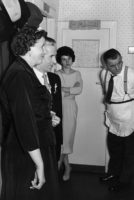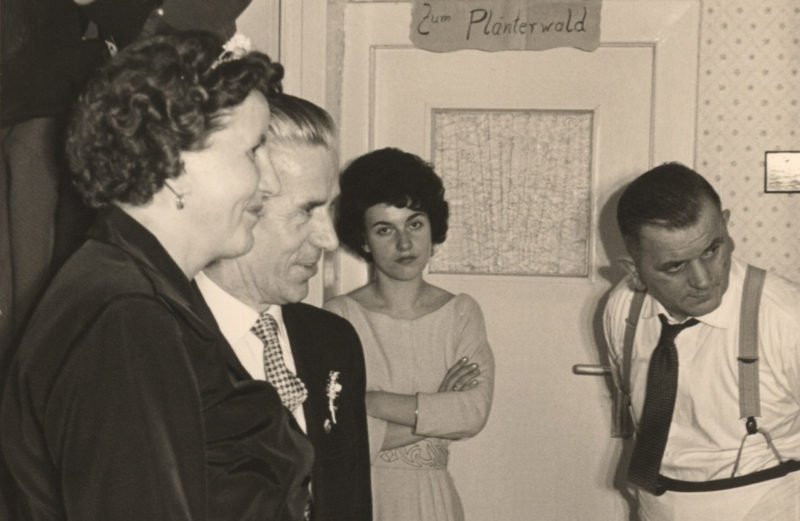“I often find the terms Narrative, Story, Plot, and Structure to be used interchangeably (on blogs, in articles, tweeted, and talked about),” writes Ingrid Sundberg, “and personally, much confusion has ensued as a result.” This statement can easily be applied to how most photographers approach these terms, especially when attempting to work on a photobook. I tend to mostly run into the resulting confusion since the MFA program I teach in is photobook centric – one component of the graduation requirements is a fully realized photobook. But outside of the program, things are hardly any different.
To argue over the different meanings of these terms would appear to be the kind of exercise in semantics that in the world of photography is often belittled. Of course, such exercises can be tedious and pointless – where they are in fact tedious and pointless. Here they are not. Often enough, photographers get confused about the differences between, say, narrative and story, usually mistaking one for the other. That’s when things get iffy.
We all know (or think we know) what a story is. And narrative then is just the same thing, isn’t it? Well, not necessarily. According to Dictionary.com, narrative can be “1. a story or account of events, experiences, or the like, whether true or fictitious”, “2. a book, literary work, etc., containing such a story”, or “3. the art, technique, or process of narrating, or of telling a story.” Those three options really aren’t the same at all. A photobook’s story is not the same as the book itself, and those two aren’t the way that story is being told. What I tend to find is that many photographers use the term narrative in the sense of it being the same as story (option 1), but what they mean is that it is the way the story is told (Option 3).
In part because many photographers don’t realize there is that difference, much fretting about the idea of story itself can happen. “Does my book have to have a story?” is an actual question I have been asked multiple times. Well, no, it obviously doesn’t. But even if it doesn’t have a story, it will – by construction – still have a narrative. This is because it will contain a set of photographs that are being presented in a very specific way: there is an edit, a sequence, and very specific decisions about design and production were (hopefully) being made. As I’m trying to explain in the following, the edit and sequence (and to a lesser extent design and production) form a specific narrative that, in turn, might or might not produce or allude to a story. How to approach this then?
For a start, in line with Sundberg’s approach I suggest taking the terms narrative and story as meaning different things. Photographers have much to gain from following this approach since easily most photobooks don’t necessarily have a very specific story. They are clearly about something, but that “something” usually is not working along the lines of “Sue and Joe got married, and then they had a baby.” Obviously, if your photobook does have a story, there’s really no need to worry, because the following gets a lot easier. But if you don’t have a very specific story, if there is, instead, more like a general idea or some larger theme you’re aiming to convey, then you need to figure out how to do that.
When we speak of photobooks, we tend to conflate what in reality often are very different beasts. It’s good to keep this in mind. If you compare, say, Laia Abril‘s The Epilogue with Awoiska van der Molen‘s Sequester, you’ll find that they operate in very different ways even though on the surface, they’re both two examples of contemporary photobooks (and they’re then also very different than, say, Robert Frank‘s The Americans). The real reason why I think photographers need to understand how photobooks operate is not to just know about as many books as possible. It is mostly to figure out which type might apply to the group of pictures in question.
This is where understanding the term narrative comes in. As Sundberg outlines, it applies to the visual arts, and in particular to photography, in more ways than one. For a start, there is what is known as staged-narrative photography, images created (staged) purposefully with the idea of narrative in mind – think Gregory Crewdson. Like every photograph, these pictures depict an event. Unlike most other photographs, though, the way the photographs are produced is intended to very specifically allude to a story that we are all familiar with (so obviously, you can’t create staged-narrative photographs around a story, however broad it might be, that nobody has ever heard of: Kaspar Hauser would be very baffled by Crewdson’s work). In Crewdson’s latest case, Cathedral of the Pines, that’s the somewhat Lynchian sense of psychological comfort and ennui of American life (which, admittedly, has become rather stale by now, but that’s another issue): we don’t know why these people all look the way they look, but we all have some idea, even though the specifics of our ideas might be quite different. There’s an event depicted, and that event alludes to a larger story it is part of. In Sundberg’s words, “these artworks are considered narrative because they recall a story through association.” So this is interesting, because as a maker of such work you will have to get the association right (otherwise, it wouldn’t really qualify as staged-narrative any longer).
“Herein lies the truth of narrative,” writes Sundberg, “it can be a story but it does not have to be. A narrative is about story, and creates connections to story and storytelling but does not in and of itself have to be a story.” (emphasis in the original) This last phrase is supremely important for photography, because it defines the distinction between narrative and story. But it also helps to expand the discussion of staged-narrative photographs to many other types of pictures. It might not be too much of a stretch to say that all photographs allude to some sort of story, however vague it might actually be. Staged-narrative photographs merely attempt to make the allusion as obvious and strict as possible, following conventions that for hundreds of years have served painters well.

The idea of photographs alluding to stories lies behind such fortune-cookie sentiments as “a photograph is worth a thousand words,” or the various ideas that photographs operate like poems, say. Whichever way of talking about this you might prefer, photographs aren’t really entities of their own. Instead, they point at something else, whether that something else is a story, a feeling, an idea, or simply its maker’s expression to affirm her or his presence.
The photograph shown in Figure 1 is one I found in Berlin in a box filled with hundreds of others, all apparently taken from old albums. It’s the kind of picture I have a hard time not buying, no doubt to a large extent because for me, it’s filled with potential. There are all kinds of details to be noted here. What mostly interested me is the fact that the photo almost begs to be put into some context, into some interaction with other pictures. The four people depicted here are all looking at something. The three older ones’ attention is devoted to something outside of the frame. Whatever that might be, it’s interesting enough for the man on the right to bend and turn around (which, given his attire, adds a degree of humour and levity). That would be fairly interesting, if if weren’t for the fourth person, a young woman, who in what I take as a mix of boredom and exasperation is looking directly at the camera, and thus at the viewer. There really is no specific story here I can think of, but there certainly are many situations. For a start, many social occasions bore me just as much that they appear to bore than young woman. So she found her accomplice here (if you can make the viewer your accomplice – or make her/him believe s/he is – that’s always great). And whatever is happening outside of the frame, getting all that attention, I’m actually dying to know, even though in all likelihood I might react just like that young woman… Who knows? So this picture for me behaves like a puzzle piece that is just waiting to be linked to another one.
(this article is the first in a series of two; the second part can be found here)
